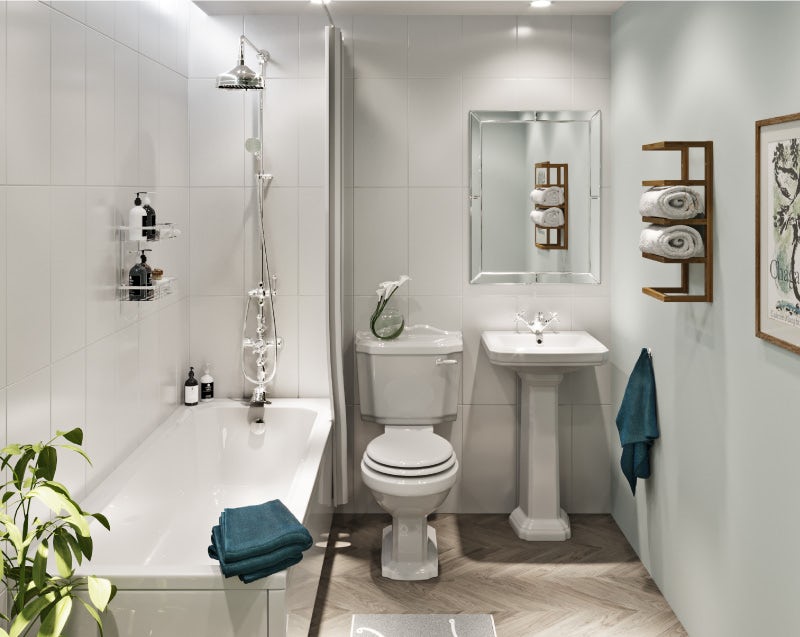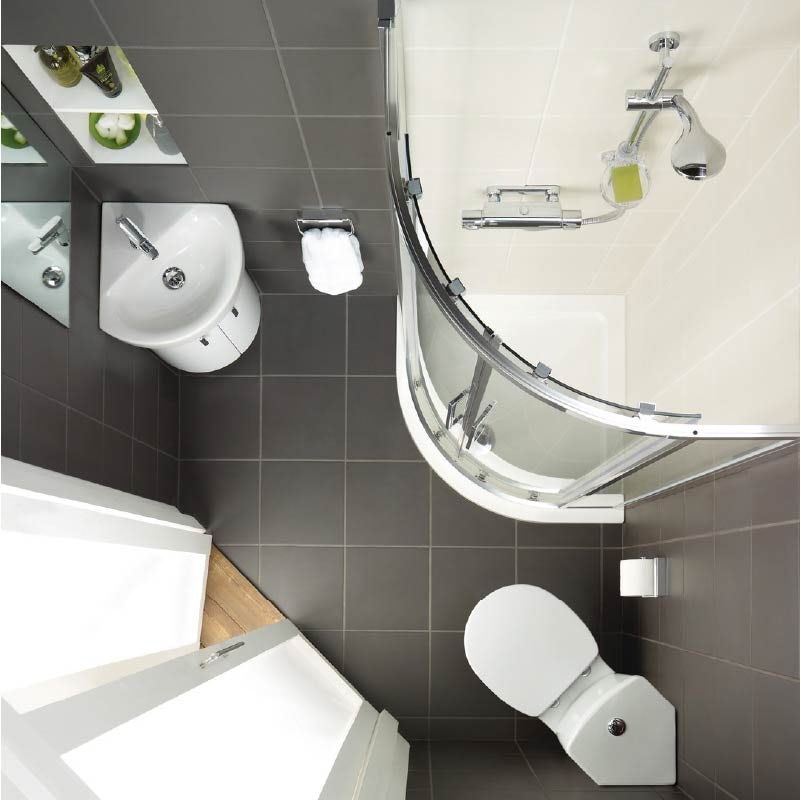Unsure about whether you want to add an extra bathroom to your house? Confused about the best location for it? Read on for advice and discussion from the experts at Victoria Plum.
Introduction
Fixing, renovating and remodelling a bathroom is hard work. It’s one of the rooms in the house that you use the most and so you definitely don’t want to do a shoddy, half-hearted job. Unlike other rooms, such as the home office, living space or bedrooms, bathrooms have very specific plumbing, installation time, ventilation and electrical requirements. This may make you wonder whether you can actually add a bathroom anywhere in a house.
Despite reservations, it can potentially be quite simple to add a full bathroom or an extra bathroom anywhere in the house, especially if you have the space, money and time to really plan it out.
Why would I want to add another bathroom to my home?
There are several reasons why an additional or extra bathroom could be added to your existing space and can help to drastically increase your quality of life.
By far the most common reason people cite for wanting to add a new bathroom is to make toilet or shower breaks more convenient and comfortable. En suite bathrooms are incredibly popular as they make life easier and become an integral part of your home. People like having their bathroom breaks undisturbed, and near to the place they work or sleep in their existing home.
If you have a guest or main bathroom, you can have people over to stay more frequently as there is enough private space to be comfortable and less awkward. More space in this case equates to having more privacy and the option of another shower or toilets. This is the perfect solution. Most modern homes include a new bathroom or master bathroom as well as just enough room for a second toilet, often at ground level. An extra en suite bathroom, attached to the bedroom, could have a bath or half bath, sink or shower enclosure if there is enough space.
If you find yourself, as do many people, in a rush in the morning, having an additional bathroom closer to where you wake up can help cut down your time for preparation. You can easily move between the wardrobe, your bag, the shower and the toilet, without going up and down the stairs.
If you have children, or many people living in the same house, this should be an easy decision. You've most likely experienced the morning hurry to get off to work or school, and in shared bathrooms, being slowed down by family members hogging the bathroom can be annoying.
Another reason people commonly overlook is the value a second bathroom brings to your home. Installing another new bathroom in most houses will increase the resale value, particularly if the new space is an en suite in the perfect location. It is commonly known that bathrooms beyond the first one can add 4 to 5% to the total valuation of the house. A house with many bathrooms sells more easily as it will suit new families or those who expect guests often, making it a cost-effective upgrade that retains its value long-term.
Where should I put my new bathroom?
By adding a dream bathroom to your existing home, you can make an inexpensive but impactful upgrade to your living situation, as long as you do it properly. Building regulations, water supply pipes, waste pipes and floor joists all need to be looked into correctly. Look at what your existing bathroom uses and whether the layout and existing system can be copied. You may need to get planning permission depending on the situation or whether the house is a listed building. Walls, a window, bathroom heating and ventilation, not to mention plumbing, should not be overlooked.
It is important to situate the bathroom in a strategic, empty space or a place that lends itself to a plumbing system. If you spend a lot of money adding a second bathroom to a house with only two tenants living together in the master bedroom, take into account how often you have guests. If people don't stay often, it could turn into just an additional place to clean with lots of money wasted behind a closed door.
Some places you might want to consider adding a toilet are:
- As an ensuite to your bedroom (to create a room that can be sublet out easily)
- On the second storey of your house
- In a space under the stairwell or at the back of the kitchen that you aren’t currently using
- Near your child’s bedroom
- In a cordoned-off part of the garage
- Large, unused cupboard space
How much room is needed for a new bathroom?
In the UK, an average-sized bathroom measures just over 4 square metres. Compared to other rooms, this is remarkably small, so some families like to have a second cloakroom that only features a toilet and sink. This helps to minimise cramping when you have visitors and guests, as they are unlikely to shower unless they are staying.
As a luxurious option, if you are not limited to tight space then you can plan a new bathroom that is at least 6 square metres in size. This creates a bathroom that is spacious and comfortable. If you have the addition of natural light and a window, this will also enhance the size of the existing bathroom.
Whether or not you’re tight on space, make sure to measure well before committing to the home renovation and introduction of a new bathroom. Even if you have a big room, if it’s the location is difficult to access with exterior walls or hard to reach by plumbing, large parts of the space might be not available to build in. Add a bathroom only if it is fundamentally simple to do so.
A handy guide for working out the available area is to ensure there is at least 600mm between the door and the front of the toilet. This is so that your legs can stretch. And make sure the door has enough clearance to swing and not hit anything.
Key considerations
Unless you are including the section as part of a house extension, you may not require a permit or permission from authorities to build your bathroom. You are required to have a qualified electrician conducting all of your electrical work. If you should install boilers or heating systems, a Gas Safe-compliant engineer will need to step in.
Another key consideration is the SVP, which stands for the Soil and Vent Pipe. Your bathroom connects to the outside area through the pipe, leading to the sewer system for existing waste. This cannot be moved, so you will have to find ways to connect to the SVP without going through the supporting structure of your home.
Top tip: Find out more about domestic water systems with our handy guide.
Conclusion
Though you can absolutely add a bathroom anywhere in your house, there are many areas and rooms that may be unsuitable due to walls, the building, ventilation, floor or waste. It may be questionable to add an extra bathroom just for the sake of it, but the value it can achieve, if you plan to sell at some point in the future, should increase.
Make sure the space you’re choosing doesn’t have a potential better use, and that it is the best possible space to install a new bathroom. Then, check if the space is adequate for the appliances you wish to add and make sure the wiring, waste pipes and plumbing can be connected properly.
More small space inspiration & advice
At Victoria Plum, you’ll find plenty of bright ideas and helpful advice when it comes to turning a small space into a bathroom, cloakroom or ensuite. We’ll show you how to easily add bathrooms to your home, how to make a small bathroom look bigger and even demonstrate just how small a bathroom can be. Click on the image below to find more ideas for small spaces.















